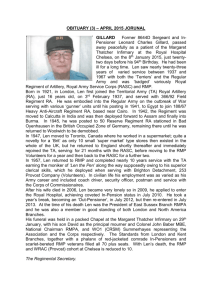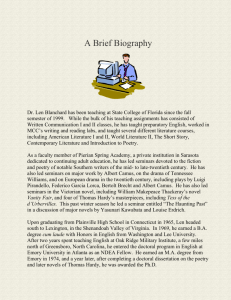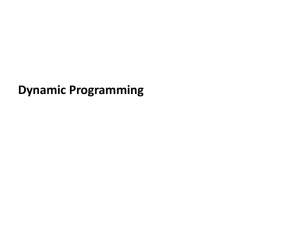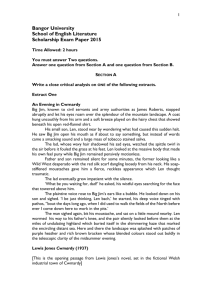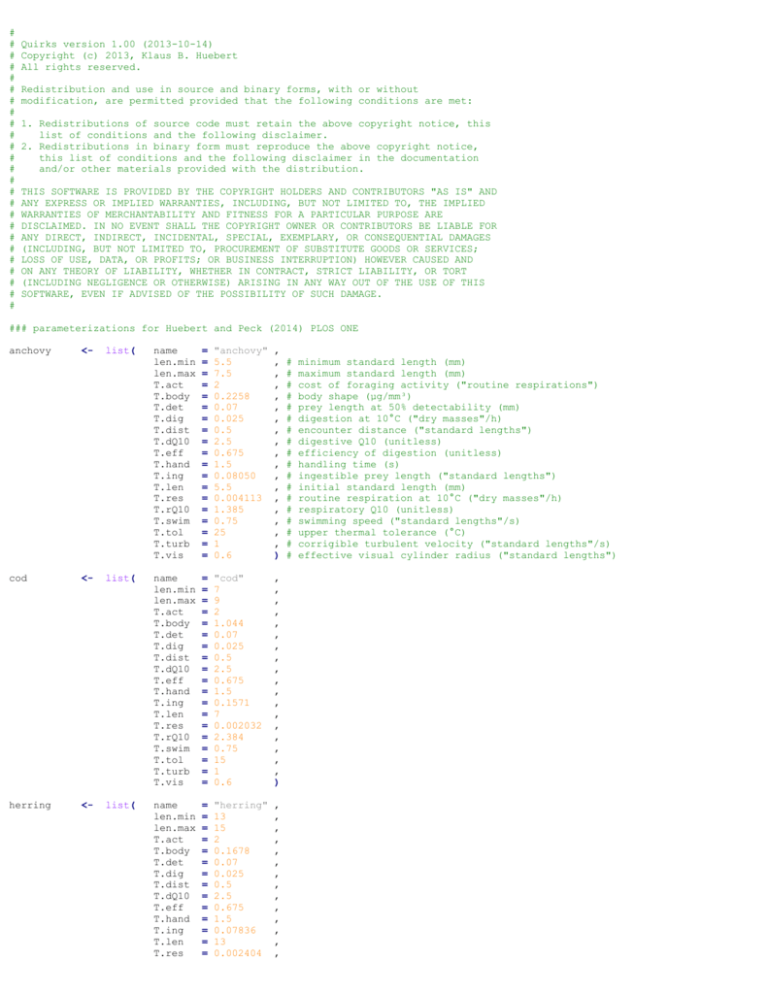
#
#
#
#
#
#
#
#
#
#
#
#
#
#
#
#
#
#
#
#
#
#
#
#
#
Quirks version 1.00 (2013-10-14)
Copyright (c) 2013, Klaus B. Huebert
All rights reserved.
Redistribution and use in source and binary forms, with or without
modification, are permitted provided that the following conditions are met:
1. Redistributions of source code must retain the above copyright notice, this
list of conditions and the following disclaimer.
2. Redistributions in binary form must reproduce the above copyright notice,
this list of conditions and the following disclaimer in the documentation
and/or other materials provided with the distribution.
THIS SOFTWARE IS PROVIDED BY THE COPYRIGHT HOLDERS AND CONTRIBUTORS "AS IS" AND
ANY EXPRESS OR IMPLIED WARRANTIES, INCLUDING, BUT NOT LIMITED TO, THE IMPLIED
WARRANTIES OF MERCHANTABILITY AND FITNESS FOR A PARTICULAR PURPOSE ARE
DISCLAIMED. IN NO EVENT SHALL THE COPYRIGHT OWNER OR CONTRIBUTORS BE LIABLE FOR
ANY DIRECT, INDIRECT, INCIDENTAL, SPECIAL, EXEMPLARY, OR CONSEQUENTIAL DAMAGES
(INCLUDING, BUT NOT LIMITED TO, PROCUREMENT OF SUBSTITUTE GOODS OR SERVICES;
LOSS OF USE, DATA, OR PROFITS; OR BUSINESS INTERRUPTION) HOWEVER CAUSED AND
ON ANY THEORY OF LIABILITY, WHETHER IN CONTRACT, STRICT LIABILITY, OR TORT
(INCLUDING NEGLIGENCE OR OTHERWISE) ARISING IN ANY WAY OUT OF THE USE OF THIS
SOFTWARE, EVEN IF ADVISED OF THE POSSIBILITY OF SUCH DAMAGE.
### parameterizations for Huebert and Peck (2014) PLOS ONE
anchovy
<-
list(
name
len.min
len.max
T.act
T.body
T.det
T.dig
T.dist
T.dQ10
T.eff
T.hand
T.ing
T.len
T.res
T.rQ10
T.swim
T.tol
T.turb
T.vis
=
=
=
=
=
=
=
=
=
=
=
=
=
=
=
=
=
=
=
"anchovy"
5.5
7.5
2
0.2258
0.07
0.025
0.5
2.5
0.675
1.5
0.08050
5.5
0.004113
1.385
0.75
25
1
0.6
,
,
,
,
,
,
,
,
,
,
,
,
,
,
,
,
,
,
)
cod
<-
list(
name
len.min
len.max
T.act
T.body
T.det
T.dig
T.dist
T.dQ10
T.eff
T.hand
T.ing
T.len
T.res
T.rQ10
T.swim
T.tol
T.turb
T.vis
=
=
=
=
=
=
=
=
=
=
=
=
=
=
=
=
=
=
=
"cod"
7
9
2
1.044
0.07
0.025
0.5
2.5
0.675
1.5
0.1571
7
0.002032
2.384
0.75
15
1
0.6
,
,
,
,
,
,
,
,
,
,
,
,
,
,
,
,
,
,
)
herring
<-
list(
name
len.min
len.max
T.act
T.body
T.det
T.dig
T.dist
T.dQ10
T.eff
T.hand
T.ing
T.len
T.res
=
=
=
=
=
=
=
=
=
=
=
=
=
=
"herring"
13
15
2
0.1678
0.07
0.025
0.5
2.5
0.675
1.5
0.07836
13
0.002404
,
,
,
,
,
,
,
,
,
,
,
,
,
,
#
#
#
#
#
#
#
#
#
#
#
#
#
#
#
#
#
#
minimum standard length (mm)
maximum standard length (mm)
cost of foraging activity ("routine respirations")
body shape (µg/mm³)
prey length at 50% detectability (mm)
digestion at 10°C ("dry masses"/h)
encounter distance ("standard lengths")
digestive Q10 (unitless)
efficiency of digestion (unitless)
handling time (s)
ingestible prey length ("standard lengths")
initial standard length (mm)
routine respiration at 10°C ("dry masses"/h)
respiratory Q10 (unitless)
swimming speed ("standard lengths"/s)
upper thermal tolerance (°C)
corrigible turbulent velocity ("standard lengths"/s)
effective visual cylinder radius ("standard lengths")
T.rQ10
T.swim
T.tol
T.turb
T.vis
=
=
=
=
=
1.711
0.75
20
1
0.6
,
,
,
,
)
name
len.min
len.max
T.act
T.body
T.det
T.dig
T.dist
T.dQ10
T.eff
T.hand
T.ing
T.len
T.res
T.rQ10
T.swim
T.tol
T.turb
T.vis
=
=
=
=
=
=
=
=
=
=
=
=
=
=
=
=
=
=
=
"sprat"
7
9
2
0.06841
0.07
0.025
0.5
2.5
0.675
1.5
0.03837
7
0.002404
1.711
0.75
16
1
0.6
,
,
,
,
,
,
,
,
,
,
,
,
,
,
,
,
,
,
)
sprat
<-
list(
prey.lo
prey.bin
prey.hi
=
=
=
0.04 # lower prey length (mm)
0.01 # prey length bin size (mm)
2.00 # upper prey length (mm)
### initialization
prey.len
<-
seq(prey.lo+prey.bin/2,prey.hi-prey.bin/2,by=prey.bin) # characteristic lengths for each prey size bin (mm)
init.fish
<-
function(name,Temp,photo,biomass=1e6,slope=-1.2,epsilon=1e-7) # sets up traits and fish/conditions
{
traits
<<- eval(as.name(name))
fish
<<- expand.grid(
Temp
= Temp
, # temperature (°C)
photo
= photo
, # photoperiod (h daylight)
biomass = biomass
, # prey (dry) biomass (mg/m³)
slope
= slope
, # normalized prey size spectrum (unitless)
epsilon = epsilon
) # turbulent kinetic energy dissipation (W/kg)
fish$len
<<- traits$T.len
fish$mass
<<- DM.from.SL(fish$len) }
### prey field
prey.DM
<-
function(x=prey.len) # individual prey dry mass (µg)
8.6*x^2.1
prey.int
<-
function(slope,lo=prey.lo,hi=prey.hi) # preyfield integral (µg)
{
slope
<- slope+(slope+1==0)*1e-6 # prevents division by zero
prey.DM(hi)^(slope+1)/(slope+1)-prey.DM(lo)^(slope+1)/(slope+1) }
prey.BM
<-
function(biomass,slope) # prey bin biomass (mg/m³), DW
biomass*prey.int(slope,prey.len-prey.bin/2,prey.len+prey.bin/2)/prey.int(slope)
prey.conc
<-
function(biomass,slope) # prey concentration (1/mm³)
1e-6*prey.BM(biomass,slope)/prey.DM()
handling
<-
function() # handling time, i.e. prey encounter duration (s)
traits$T.hand
max.prey
<-
function(len) # maximum ingestible prey length (mm)
traits$T.ing*len
max.w.turb
<-
function(len) # maximum turbulent velocity (mm/s)
traits$T.turb*len
u.pred
<-
function(len) # predator swimming velocity (mm/s)
traits$T.swim*len
v.prey
<-
function() # prey swimming velocity (mm/s)
prey.len*3
w.turb
<-
function(len,epsilon) # relative predator-prey turbulent velocity (mm/s)
55/18*0.53*(traits$T.dist*len*1e6*epsilon)^(1/3)
V.combined
<-
function(len,epsilon) # combined velocity (mm/s)
sqrt(u.pred(len)^2+v.prey()^2+w.turb(len,epsilon)^2)
### foraging
observation <-
function() # probability of detecting nearby prey (unitless)
prey.len/(prey.len+traits$T.det)
encounter
<-
function(len,biomass,slope,epsilon) # perceived encounter rate (1/s)
V.combined(len,epsilon)*pi*(traits$T.vis*len)^2*prey.conc(biomass,slope)*observation()
pursuit
<-
function(len,epsilon) # probability of successful pursuit (unitless)
pmax.int(1-w.turb(len,epsilon)/max.w.turb(len),0)
capture
<-
function(len) # probability of successful capture (unitless)
pmax.int(1-prey.len/max.prey(len),0)
meal
<-
function(len,epsilon) # expected DM ingested per encounter (µg)
prey.DM()*pursuit(len,epsilon)*capture(len)
ranking
<-
function(len,epsilon) # order of prey bins from most to least favourable (unitless)
order(meal(len,epsilon)/handling(),decreasing=T)
cum.meal
<-
function(len,biomass,slope,epsilon) # ingestion (without handling) by diet composition (µg/s)
cumsum((meal(len,epsilon)*encounter(len,biomass,slope,epsilon))[ranking(len,epsilon)])
cum.hand
<-
function(len,biomass,slope,epsilon) # fraction of time engaged in handling by diet (unitless)
cumsum((handling()*encounter(len,biomass,slope,epsilon))[ranking(len,epsilon)])
diets
<-
function(len,biomass,slope,epsilon) # ingestion (with handling) by diet (µg/s)
cum.meal(len,biomass,slope,epsilon)/(1+cum.hand(len,biomass,slope,epsilon))
foraging
<-
foraging
<-
function(len,biomass,slope,epsilon) # optimal foraging capacity (µg/h)
max(diets(len,biomass,slope,epsilon))*60*60
Vectorize(foraging,c("len","biomass","slope","epsilon"))
### growth
DM.from.SL
<-
function(len) # dry mass (µg)
traits$T.body*len^3
SL.from.DM
<-
function(mass) # standard length (mm)
(mass/traits$T.body)^(1/3)
digestion
<-
function(mass,Temp) # digestive capacity, i.e. max gut content * gut evacuation rate (µg/h)
mass*traits$T.dig*traits$T.dQ10^((Temp-10)/10)
respiration <-
function(mass,Temp) # routine respiration (µg/h)
mass*traits$T.res*traits$T.rQ10^((Temp-10)/10)
grow
function() # ("dry masses"/d), contact me for an efficient version suitable for large datasets
{
f.wrapper
<- function() foraging(fish$len,fish$biomass,fish$slope,fish$epsilon) # (µg/h)
d.wrapper
<- function() digestion(fish$mass,fish$Temp) # (µg/h)
r.wrapper
<- function() respiration(fish$mass,fish$Temp) # (µg/h)
gain
<- function() ifelse(light,pmin.int(f.wrapper(),d.wrapper())*light*traits$T.eff,0) # (µg)
loss
<- function() r.wrapper()*(1+traits$T.act*light) # (µg)
if(max(fish$len<traits$len.min)) # enforces minimum length
{
fish
<<- fish[fish$len>=traits$len.min,]
if(nrow(fish)==0)
return() }
if(max(fish$Temp>traits$T.tol)) # enforces maximum thermal tolerance
{
fish
<<- fish[fish$Temp<=traits$T.tol,]
if(nrow(fish)==0)
return() }
for(Time in 1:24) # (h)
{
if(max(fish$len)>traits$len.max) # enforces maximum length
{
fish
<<- fish[fish$len<=traits$len.max,]
if(nrow(fish)==0)
return() }
light
<- 1-pmax.int(pmin.int((24-fish$photo)-(Time-1)%%24,1),0) # daylight (h)
fish$mass
<<- fish$mass+gain()-loss()
fish$len
<<- ifelse(fish$mass>DM.from.SL(fish$len),SL.from.DM(fish$mass),fish$len) }
return(fish$mass/DM.from.SL(traits$T.len)-1) }
<-
### example: grow 7-mm cod at 3 temperature x 3 photoperiod x 3 prey x 3 turbulence levels
init.fish(
name
= "cod"
Temp
= c(8,10,12)
photo
= c(8,12,16)
biomass = c(40,20,10)
slope
= -1.2
epsilon = c(1e-9,1e-7,1e-5)
fish$growth <- grow()
unlist(traits)
head(fish,18)
summary(fish)
,
,
,
,
,
)


